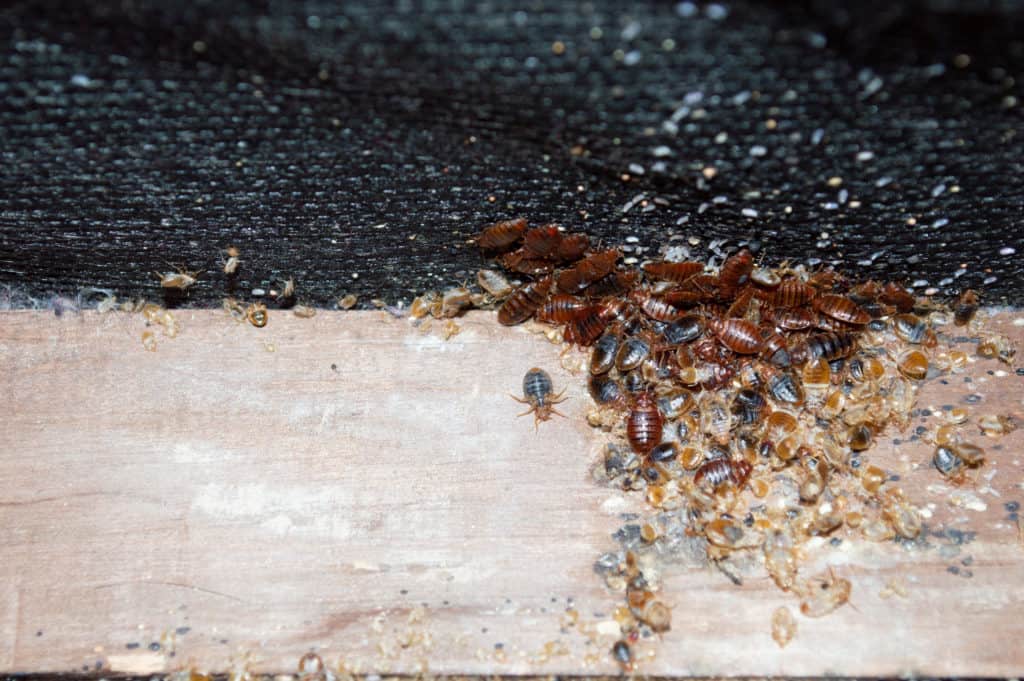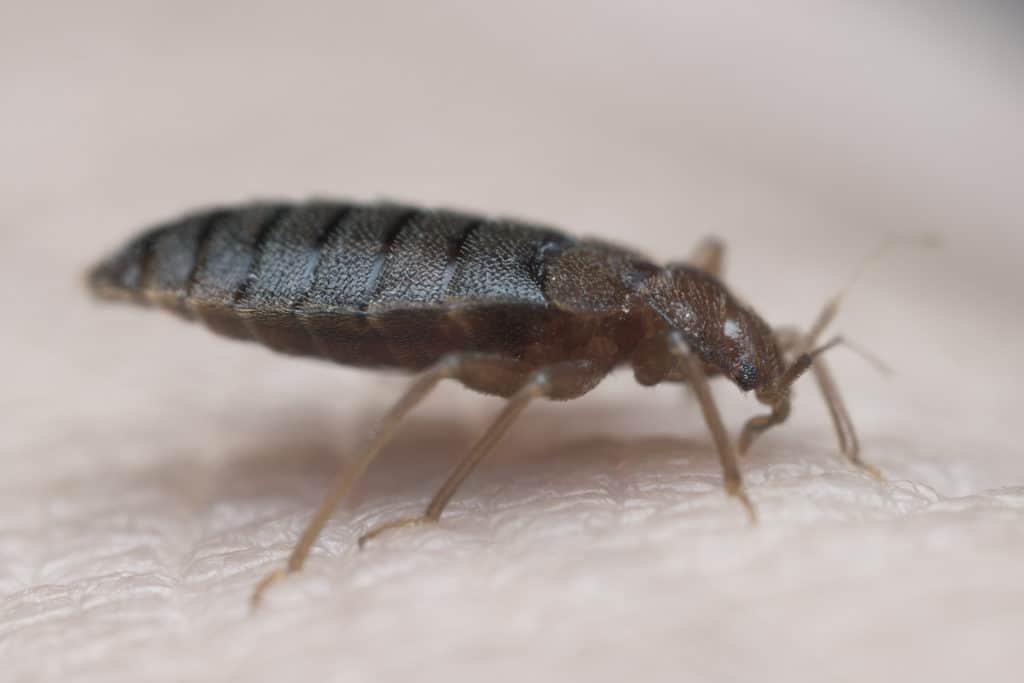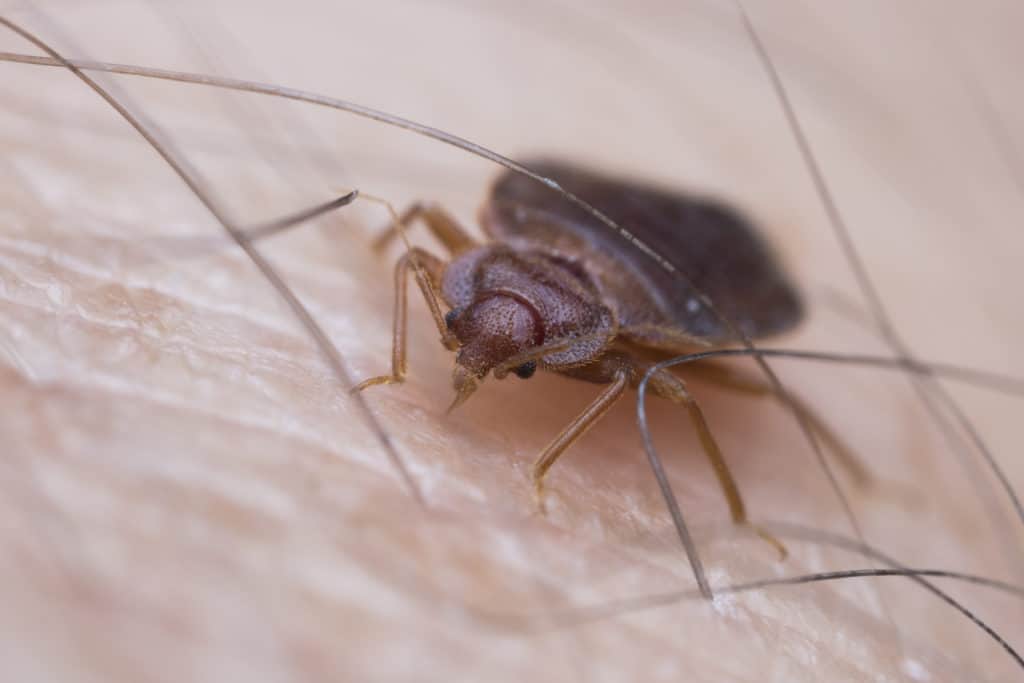Up Close and Too Personal: An in Depth Look at Bed Bugs
Up Close and Too Personal: An in Depth Look at Bed Bugs
An Increasingly Common Parasite
With the world being more connected than ever, we are able to share so many beautiful things include culture, fashion, cuisines, stories, and so much more! But, unfortunately, this also puts us at more of a risk of sharing some not so pleasant things… including parasites. Bed bugs in particular have a proclivity for being shared from place to place due to their tendency to hitchhike. They are photophobic creatures that prefer to find tight dark crevices in which to hide. This can include the inside of purses, backpacks, luggage, clothing and more – all places that put them at an advantage for travel.
At one point, we nearly eradicated them from the United States utilizing a chemical treatment known as DDT. Unfortunately, DDT was found to be extremely toxic. The most notable negative side effects due to DDT exposure included: breast cancer, male infertility, miscarriages, liver damage, developmental disabilities in children and extensive nervous system damage. As such, the chemical was quickly removed from circulation and bed bugs once again began growing in numbers. Nowadays, it is estimated that roughly 1 out of 5 people in the United States have either dealt with a bed bug problem directly or knows someone who has. With their populations so rampant and the risk of an infestation of your own rather high, it can be useful to get to know these little parasites more up close and personal.

Bed Bugs 101
Known scientifically as Cimes lectularius, bed bugs are external parasitic insects that feed on human blood. Depending on where they are found, they can be called a variety of different names including mahogany flat, red coats, wall louse, bed louse, and more.
As is the case with many insects, reptiles, birds, and even mammals, bed bugs begin their lives as simple eggs. The amount of meals a female bedbug has access to directly effects the number of eggs she is able to lay. From a single blood meal, females can lay between 5 – 20 eggs total, and between 1 – 7 in a single day. In completely optimal conditions, females can produce enough eggs to double their population every 16 days and can up to 200 eggs in a lifetime. This is why bed bug problems can quickly get WAY out of hand.
As adults, bed bugs are reddish-brown in color with flat, oval-shaped bodies. They measure about 3/16 inches in length and are flat similar to an apple seed. After a sanguine meal, they are swollen and red, more rotund. On average, adults live between 6-12 months, although in optimal conditions some can live longer. They are also capable of surviving very long time periods without indulging in any blood meals, making them very difficult to starve out.

Finding an Infestation
Aside from seeing the actual bugs themselves you may notice other signs of an infestation. The two other most prominent signs are: bed bug bites or reddish-brown stains on bedsheets, couches, or other fabrics. These bites are often arranged in lines. Bed Bugs have a tendency to bite… walk a ways… bite again… and so on, hence the linear pattern. They also target exposed skin, so, if you are wearing pajamas at night, they are far more likely to bite your exposed limbs, feet, neck, etc. Aside from simply leaving behind small, itchy red bumps, people rarely have any other reactions to the bites. In rare cases however, people may experience adverse reactions to the bites including:
- Blisters
- Swollen tongue
- Fever
- Nausea
- Large red sores or hives
These are signs of an allergic reaction and if such symptoms occur, it is advisable to seek immediate medical attention.

Stay Away!
Bed bugs are extremely resilient creatures. Not only are they becoming increasingly resistant to insecticides, they have existed for over 100 million years, they can live up to a year without a blood meal, they can hitchhike across oceans completely unnoticed, bed bug eggs have an average survival rate of 97%, and a single female can produce up to 200 offspring in a single lifetime.
So, what can we do? Well, since bed bugs can hide in places like hotels, airplanes, movie theaters, etc. it is important to be wary when you visit any of these locations and, in your own home, the following can help avoid a bed bug problem and prevent an existing one from becoming out of control:
- Vacuum carefully and frequently
- Reduce clutter
- Use a mattress cover
- Avoid using moving blankets
- Inspect any pre-used furniture that you may purchase

So, You Have Bed Bugs
When you find out you have bed bugs, things can quickly become overwhelming. Unless you’ve had a run-in with these nasty bloodsucking insects before, you may have a lot of questions. But no need to fear, at Green Pest Services, we’ve got your back. We are experienced with combating these tricky pests and we want you to be able to sleep soundly once again.

Citations
Bed Bugs FAQs (2020) Centers for Disease Control and Prevention. The Global Health Division of Parasitic Diseases and Malaria. Available at: https://www.cdc.gov/parasites/bedbugs/faqs.html (Accessed: September 2020).
DDT – A Brief History and Status (no date) The United States Environmental Protection Agency. Available at: https://www.epa.gov/ingredients-used-pesticide-products/ddt-brief-history-and-status (Accessed: August 2020).
Gannon, M. (2017) Bedbugs: Facts, Bites and Infestation, LiveScience. Available at: https://www.livescience.com/42297-bed-bugs-facts-information.html (Accessed: August 2020).
Green, H. (2016) 7 Things You Should Know About Bed Bugs, YouTube. SciShow. Available at: https://www.youtube.com/watch?v=uFk0t9DHu1Q
Hill, C. and MacDonald, J. (2008) Bed Bugs, Purdue University College of Agriculture – Entomology. Available at: https://extension.entm.purdue.edu/publichealth/insects/bedbug.html (Accessed: December 15, 2020).
Holland, K. (2019) Everything You Need to Know About Bed Bug Bites, Healthline. Medically reviewed and edited by C. Cobb, DNP, APRN, WHNP-BC. Available at: https://www.healthline.com/health/bed-bug-bites#pets (Accessed: September 2020).
Huizen, J. (2020) Bed Bug Bites: What You Need to Know, Medical News Today. Medically reviewed and edited by D. Sullivan, Ph. D., MSN, R.N., CNE, COI. Healthline Media. Available at: https://www.medicalnewstoday.com/articles/318083#control (Accessed: September 2020).
MacMillan, A. (2017) Why Bed Bugs Are Becoming So Much Harder to Kill, Time. Available at: https://time.com/4733708/bed-bugs-insecticide-resistance/ (Accessed: August 2020).
Mayo Clinic Staff (2019) Bedbugs, Mayo Clinic. The Mayo Foundation for Medical Education and Research. Available at: https://www.mayoclinic.org/diseases-conditions/bedbugs/symptoms-causes/syc-20370001 (Accessed: September 2020).
Miller, D. M. and Polanco, A. (no date) Bed Bug Biology and Behavior, The Department of Entomology at Virginia Tech. Virginia Department of Agriculture and Consumer Services. Available at: http://www.vdacs.virginia.gov/pdf/bb-biology1.pdf (Accessed: August 2020).

